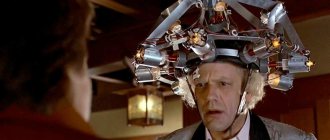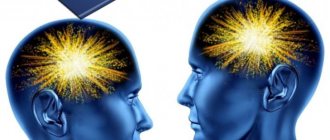The unconscious fear of being in a public place without being able to leave, or of being in a situation in which panic or anxiety may develop, is called agoraphobia. What is this? The answer is: a severe mental illness of the neurotic spectrum, related to anxiety-phobic disorders, the so-called fear of open spaces. To put it simply, along with other phobias, this is also a type of neurosis.
What is agoraphobia?
Agoraphobia is a type of anxiety disorder.
In simple words, agoraphobia is a disorder in which your fears prevent you from getting out into the world around you. You avoid certain places and situations because you think you will be trapped and unable to get help. For example, you may feel anxious or panicked when you are in places like these:
- Public transport (buses, trains, ships or planes)
- Large open spaces (parking lots, bridges, or just a city square)
- Enclosed spaces (shops, cinemas)
- Crowds or queuing
- Being alone outside the home.
You may go to a limited number of places or even be afraid to leave the house.
What is the fear of going outside called?
The word “Agoraphobia” itself means “fear of open space ,” that is, fear of leaving the house. Fear that people cannot control. When behaving adequately indoors or in an open space, a person suddenly begins to get lost and panic. Such a pathology can put an end to public and private life, which is why it is worth studying the origins of its occurrence, trying to overcome the phobia.
Agoraphobia in psychology
The term "Agoraphobia" comes from Greek literally translated as fear of the place where the market is located . Psychologists interpret this phobia as a fear of open doors, fear of open space and crowds. This is a neurological disorder that appears in an individual as a result of certain childhood traumas, central nervous system disorders, stress, due to the participation of other people. Agoraphobia is a subconscious defensive reaction of an individual to walking through a spacious square or street with a huge concentration of people.
A person suffering from this disease may be afraid of unforeseen actions due to the presence of a crowd around. For the first time, German neuropathologist and psychiatrist Karl Westphal spoke about what agoraphobia is. He described this disease in detail and clearly in his general scientific work “Agoraphobia, a neuropathic phenomenon.” For this experiment, Westphal observed three men who had the fear of agoraphobia, although it later turned out that it was women aged 15-35 years who suffered more from this illness . And especially if the person is overly sensual and perceives everything closely.
What is agoraphobia - obsessive fear or neurological pathology? The issue remains controversial . There is an opinion that one of the primary human instincts is fear, but it is just a function for self-preservation, embedded in the subconscious. Pathology is something else associated with a deviation or dysfunction of the nervous system. A phobia is an obsessive state of an individual caused by fear of something that, in principle, is not dangerous.
Fear of large spaces is no less common than claustrophobia.
Some are able to control themselves more, engage in their profession, communicate with other people and generally function as a full-fledged person. But at the sight of a new area and a huge expanse, uncontrollable people, signs of agoraphobia appear from the subconscious . Others see problems even in mundane things like going to the store or walking down a busy street. Most often, agoraphobes lock themselves in their “cage” and thus run away from the external environment.
Agoraphobia in psychiatry
What is agoraphobia in psychiatry? Modern doctors attribute to the concept of agoraphobia not only the fear of open, spacious places and crowds. This pathology most often covers other fears, for example, fear of performing, panic attacks, and social phobia. Some psychologists argue that a phobia of open doors can arise in a person since childhood due to excessive family protection. In such cases, it is hammered into children’s heads that potential danger awaits them outside the home.
In adult life, such upbringing entails a list of mental and neuropathic problems, including agoraphobia. For example, when an elderly person suffers a heart attack or stroke, he is always overcome by the fear of not being rescued in a timely manner and being left without medical care outside the home. Neurologists define agoraphobia according to ICD-10; these are criteria that serve for correct diagnosis.
Causes of agoraphobia and risk factors
At the moment, there is no single competent point of view regarding the causes of agoraphobia. Genetic components and factors of early maturation are identified. However, people who suffer from panic attacks (a condition where a person suddenly experiences bursts of fear that last several minutes, in the absence of real danger) are more predisposed to agoraphobia. However, whether these disorders occur in parallel or whether there is a cause-and-effect relationship between them has not yet been identified.
Women are two to three times more likely to have this disorder than men, and it is more common in adolescents and young adults.
Some other factors increase the risk of developing agoraphobia:
- Panic disorder, especially if left untreated.
- Other phobias (including social phobia).
- Having a family history of agoraphobia.
- Having experienced severe stress or other traumatic events.
Sources
- Melnikova M.V. Agoraphobia // Innovative science. 202 No. 6.
- Statsenko Oleg Aleksandrovich, Drozdovsky Yuri Vikentievich, Kralya Oleg Viktorovich Sulpiride in the complex therapy of agoraphobia with panic disorder // Russian Psychiatric Journal. 2011. No.
- Moor L.V., Rakhmazova L.D. Clinical and psychopathological features of agoraphobia with panic disorder in patients of the department of non-psychotic mental disorders // Omsk Psychiatric Journal. 2021. No. 1 (7).
- Pavlichenko A.V. Stages of development of panic disorder and differentiated therapy // BMIK. 2015. No. 2.
- Shukil L.V., Statsenko O.A., Kuznetsova I.G. The influence of stress on the formation and dynamics of the symptom complex of agoraphobia with panic disorder // Omsk Psychiatric Journal. 201 No. 1 (3).
- Burno A.M., Nekrasova S.V., Zuikova N.L. Experience in using the technique of inversion of possibilities for psychotherapy of agoraphobia in the structure of panic disorder // Archives of Internal Medicine. 201 No. S1.
Symptoms and signs of agoraphobia
If a person suffers from agoraphobia and finds himself in a place that frightens him, it greatly disturbs him, causing anxiety and panic. Physical symptoms may include:
- Increased heart rate;
- Sweating, trembling, shaking;
- Breathing problems;
- Hot flashes or feeling cold;
- nausea or diarrhea;
- Chest pain;
- Lump in throat, difficulty swallowing;
- Dizziness or weakness.
At the same time, the person feels that:
- May not survive this panic attack.
- Not in control of the situation.
- He is afraid that he will look bad in the eyes of others or that they will “stare” at him.
- Thinks he needs to be accompanied by someone he trusts when he goes out.
Additionally, he may have:
- Fear of being alone at home.
- General feeling of fear.
Panic attack
Although it is impossible to predict the onset of a first panic attack, there is evidence that a recent breakup or threat of one, an illness (often undiagnosed, such as a low-grade fever that weakens the body), increased responsibility, a hangover or drug withdrawal, fatigue, or losses and setbacks in other areas of life can provoke panic attacks. But in most cases it is impossible to determine what exactly became their root cause. This only makes the anxiety grow, because panic attacks seem to come out of nowhere, unpredictably - and it is literally draining.
As I already said, the first panic attack usually occurs for no apparent reason and is interpreted catastrophically
.
Because of this, hypervigilance
, that is, constant concentration on any signs of excitement and unusual sensations. Along with this, confidence in the incorrect interpretation of what is happening grows - “I’m having a heart attack” or “I’m going crazy.” This leads to recurrence of panic attacks.
Over time, many people develop agoraphobia - a fear of places and situations that can trigger a panic attack. This occurs when anxiety occurs under certain conditions: “If I go to the cinema, I will feel like I am locked in and will have a panic attack” or “If I go to the mall, I will not be able to find the exit and will have a panic attack.”
If anxiety persists, the person will likely resort to protective behavior in an attempt to protect and prepare. He will begin to rely on the presence of other people or certain actions to help reduce the danger: for example, he will ask someone to accompany him, seek comfort, try to reduce the effect of an alarming stimulus, and reduce the number of activities that he believes contribute to excitement (for example, playing sports). As a result, he will begin to believe that without protective behavior something terrible will happen. For example, "If I don't stick to the wall, I'll faint."
Diagnosis of agoraphobia
Many of the symptoms that characterize agoraphobia are similar to those of other disorders, such as heart disease, stomach problems, or breathing problems. Therefore, a person with agoraphobia may spend a year or more visiting different doctors or even calling 911 before he or his doctor realizes what is really going on.
In this case, the doctor may ask:
- Is it scary or difficult for you to leave the house?
- Do you have to avoid certain places or situations?
- What happens if you hit one of them?
Your doctor may do a physical exam and possibly order some tests to rule out any other medical conditions. If the organic cause of the existing symptoms is not established, a person with these symptoms will be advised to consult a psychotherapist or medical psychologist.
During the consultation, you will answer questions about your feelings and behavior. According to ICD-10 standards, a diagnosis of agoraphobia can be made if the following criteria are met (presented for informational purposes only, does not constitute a basis for self-diagnosis):
- psychological or autonomic symptoms are the primary expression of anxiety and are not secondary to other symptoms such as delusions or intrusive thoughts;
- anxiety accompanies at least two of the following situations: being in a crowd, public place or transport, alone outside the home or in a confined space;
- avoidance of phobic situations is or has been a prominent feature.
Important: self-diagnosis and self-medication are NOT acceptable. Only a psychotherapist or psychiatrist can establish a differential diagnosis, as well as draw up a correct treatment plan.
Who is more susceptible to the disease? Some statistics
Agoraphobia most often occurs at a young age. The range is in the region from 15 to 25 years. During this period, powerful hormonal and physiological changes occur in the body.
It is during this transitional period that a not yet fully formed person faces many difficulties: misunderstanding of academic disciplines, rejection of himself and his body, first unsuccessful love, conflicts with parents and teachers, inability to self-determinate, the desire to stand out from others, difficulties communicating with peers, bad company, taking psychoactive substances (drugs and alcohol). Thus, the stress factor when agoraphobia occurs is in the external and sometimes hostile world.
Most often, residents of large cities are susceptible to neurotic disorders. Difficult working conditions, conflicts in the family, lack of proper rest, lack of sleep, poor nutrition and daily routine are a serious negative background for the occurrence of agoraphobia.
Treatment of agoraphobia
In the treatment of agoraphobia, non-drug psychotherapy methods (possibly including hypnosis, cognitive behavioral therapy, exposure therapy, muscle relaxation techniques, and others) may be used, medications may be prescribed, or a combination of these may be used. A treatment plan is developed by a psychotherapist, based on information obtained during the collection of anamnesis and the severity of a particular case.
It is important to understand that agoraphobia can accompany panic disorder or manifest itself without it, or be observed together with other disorders, therefore, self-prescription of medications, despite their popularity, is contraindicated and can aggravate the situation, including contributing to the development of other disorders, depression, and neuroses. Prescription of medications by non-specialized doctors (gastroenterologists, cardiologists, etc.) at best may not produce results without non-drug psychotherapy and appropriate dosage adjustment.
Non-drug psychotherapy can be carried out by a psychotherapist or clinical psychologist. At the same time, cognitive therapy helps to change thinking and re-awareness of situations that cause panic. The use of behavioral psychotherapy is aimed at enabling a person to be in previously frightening situations without fear and panic. Learning relaxation techniques, including muscle relaxation and breathing exercises, promotes greater relaxation and self-control. You may also be offered exposure therapy, in which you gradually begin to do certain things that make you anxious and gradually reduce your level of fear. Non-drug psychotherapy sessions can be conducted by a psychotherapist or clinical psychologist.
Drug psychotherapy. The therapist may suggest tried and proven pills depending on the specific case, but the most common are usually antidepressants. Doctors often start with a low dose of one of the medications that increases serotonin levels. These drugs include citalopram, escitalopram, fluoxetine, sertraline and venlafaxine. Drug therapy may take some time. If the person feels better and no longer experiences stress when going to places that used to frighten them, the therapist will recommend gradually reducing the medication. For short-term relief, your doctor may recommend anti-anxiety medications called benzodiazepines in addition to antidepressants. These are sedatives that are not recommended to be taken for a long time. And be sure to tell your doctor if you have a history of alcohol or drug addiction.
Alternative treatments. Applied relaxation includes a series of exercises that help you notice the onset of muscle tension, increasing anxiety or approaching panic, and in time to relax the muscles and relieve this tension. Other alternative treatments that may help include breathing exercises and meditation.
Prospects
Most patients can improve with medication or behavioral therapy. However, without prompt and effective help, the disorder may become more difficult to treat.
Related posts:
- Can dementia be cured at home? Dementia is acquired dementia, a persistent decline in cognitive activity with loss...
- Features of the course of schizophrenia in men and women Schizophrenia is a disease belonging to the group of endogenous psychoses, since its causes...
- Features of the course of schizophrenia in older people Schizophrenia is a mysterious, terrible disease. In the minds of the general public...
- Psychosis: acute, manic, paranoid Psychosis is a complex mental disorder that may have an underlying…
Tips for those who want to avoid recurrent attacks
- Seek qualified medical help from a psychiatrist. Don't neglect your health! Timely attention to the problem will help prevent complications of the disease.
- Take the necessary medications prescribed by your doctor. If a psychiatrist has prescribed you therapy with tranquilizers or antidepressants, do not adjust the dosage of the medications and do not stop taking the medications at the first improvement. Psychotropic drugs have a cumulative effect. This means that the longer you take the medicine and gradually stop taking it, the longer the stable state of remission of the disease will remain.
- Carry a tranquilizer with you in case you have an attack in a public place.
- Learn techniques to relax and help yourself. Breathing techniques are the most effective. When an attack is imminent, it is important to breathe slowly, deeply and measuredly. This will prevent the development of a vegetative crisis and brain hypoxia.
- If you feel anxious about an impending attack, find a quiet place, breathe deeply, close your eyes and think about something distracting.
- If you cannot calm down on your own, approach any person and briefly explain your condition. They will definitely help you!











